CBC
Sun, October 22, 2023
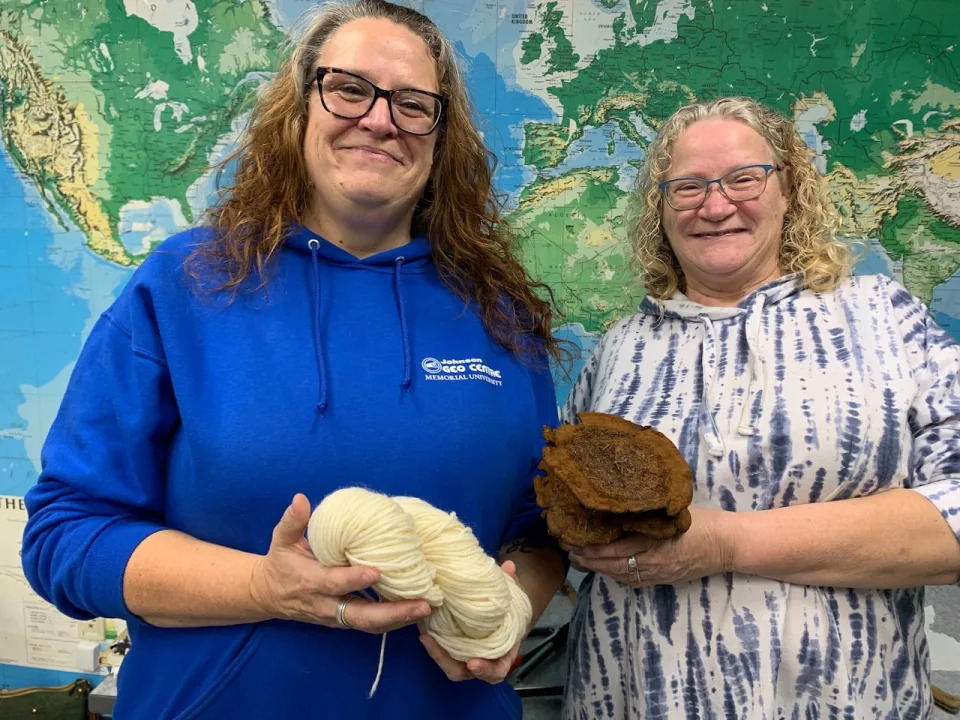
Sisters Andrea and Lisa van Nostrand are celebrating Fungus Appreciation Day by demonstrating how mushrooms can be used as dye. (Heather Barrett/CBC)
Sunday is Fungus Appreciation Day and several events are planned at the Johnson Geo Centre in St. John's to put the spotlight on these organisms.
"They're integral to the environment, they make healthy soils and they allow us to dye wool. Food sustainability. People are growing them themselves," said Andrea van Nostrand, the Geo Centre's lead on interpretation and education.
"They're nutritious. They're easy to grow. Anyone can grow them. You know, this is a topic that you could teach courses on."
Andrea and her sister Lisa van Nostrand will be demonstrating how to dye wool with mycelium, the mushroom's root network.
Lisa says they gather the mushrooms and then dice them up, place them in a mesh bag and let them simmer in a pot for an hour.
"It's a simple process and you get unexpected results because you don't always know the colours that you're going to get," she said.
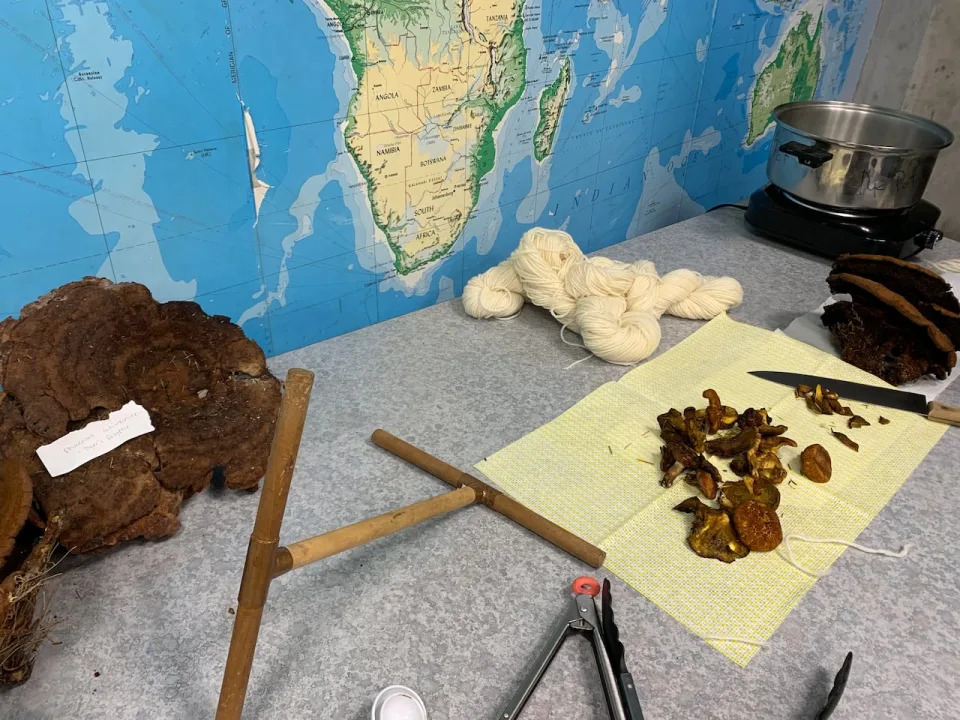
Lisa van Nostrand said the dyed material has a lot of variation, but they tend to end up what she called muted, neutral colours. (Heather Barrett/CBC)
"From beige, yellow, orange, brown and rust colours. And so they're maybe a little bit of green. So they're quite muted, neutral colours. You know, you're not going to get fuchsia, not with their mushrooms anyway.… You get a really natural looking colours," said Lisa.
Andrea says she isn't sure how common using mushrooms as dye is in the province, but pointed to plenty of resources on the subject including books, articles and websites.
They also won't be eating any mushrooms during the demonstration as they could be poisonous, she said, with Lisa chiming in, "Well, they're not edible, let's put it that way."
The rise of the mushroom
Lisa recalled that growing up in St. John's, the common message was that mushrooms were poisonous, so they didn't eat them. Now she's seen an "explosion" in interest. While she enjoys foraging for mushrooms, Lisa said she doesn't actually like to eat them.
Andrea has also seen a proliferation of local mushrooms-related businesses and even farms that grow mushrooms to sell.
Anita Walsh operates such a farm with her family, the 160 hectare Portugal Cove-St. Philip's-based Windy Heights Farm. On top of growing mushrooms, they also sell mushroom growing kits.
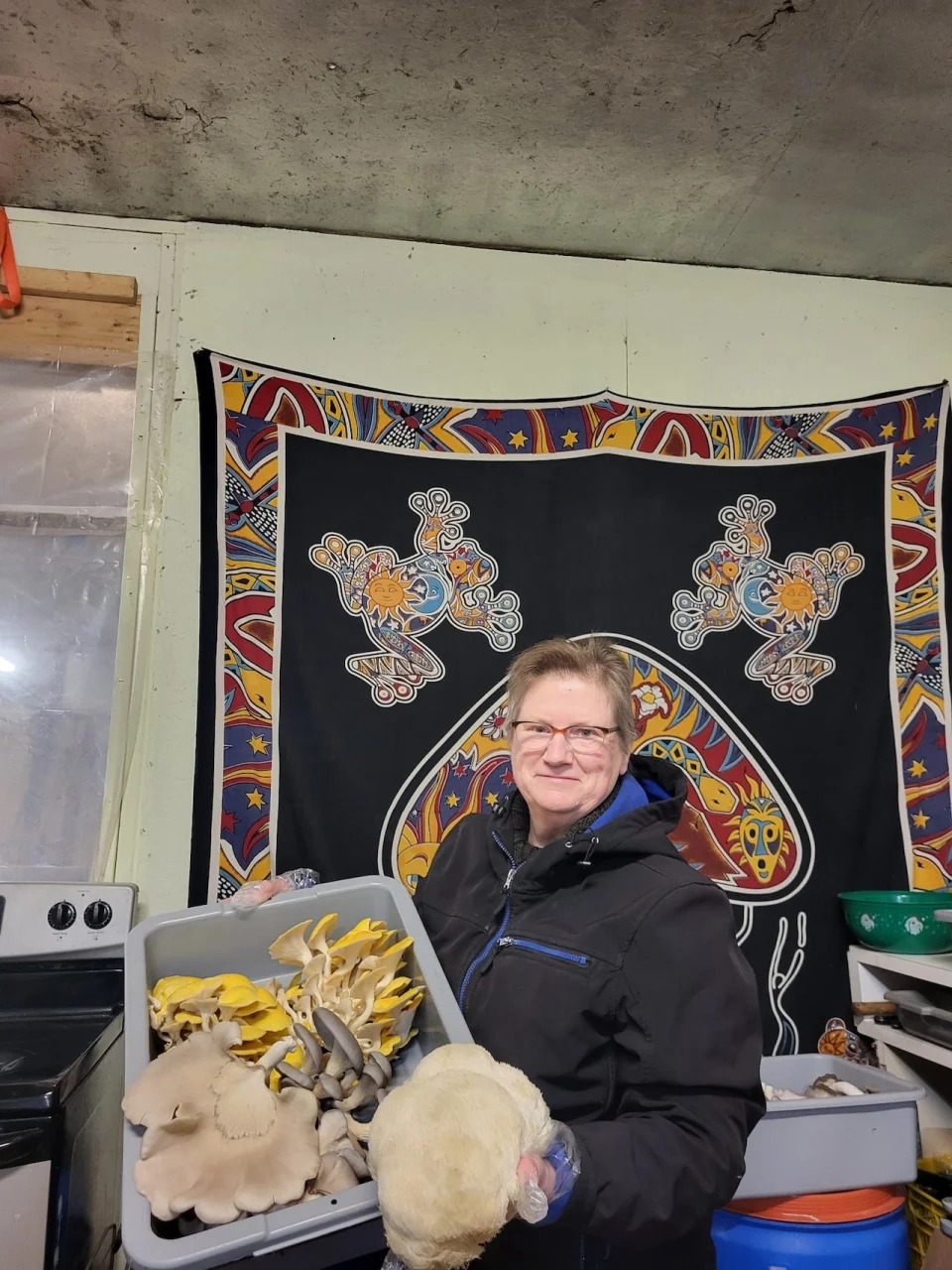
Anita Walsh poses with a range of edible mushrooms, which are all grown indoors at Windy Heights Farm in Portugal Cove. (Submitted by Anita Walsh)
From her perspective, people need to embrace the mushrooms.
"It's so underutilized and so misunderstood, that it's vital that we do not miss out on this opportunity to find out more about this amazing organism," Walsh said.
"Mushrooms are medicinal. They're healthy. They're beautiful. And they're tasty all at once."
Walsh added people can build with it, make clothing out of it, use it as medicine or just as a food. It's also versatile when it comes to growing, as it can be grown in doors or foraged in the wild.
"The more you learn about mushrooms, the more you want to learn about mushrooms," she said.
On Tuesday, she said they'll be leading a workshop at the Johnson Geo Centre on mushroom totem growing.
She explained they will have birch trees cut into disks and spores will be placed in the centre. From there, participants will take them home to keep them somewhere dark and warm in order to grow mushrooms.
Walsh hopes people will develop an interest in growing their own mushrooms too.
"We're all about educating others on how to grow your own food, being more aware of nature and what types of foods we can still harvest in nature."
Eastern Ontario farmer discovers new variety of truffle
CBC
Sun, October 22, 2023
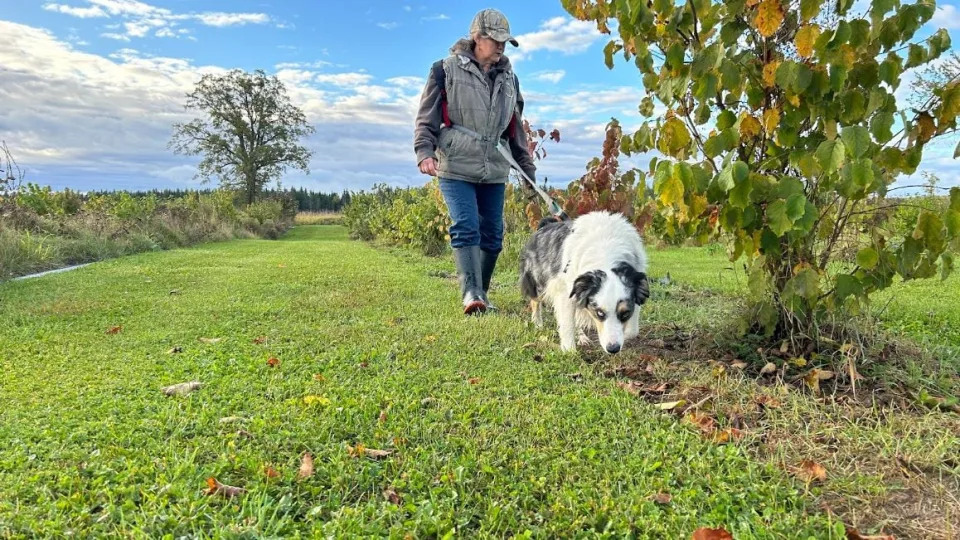
When Lucille Groulx started her truffle farm in Wendover, Ont., in 2015, she was using truffles she had imported from France.
Only later did she discover an indigenous variety of the rare delicacy was already buried on her land.
The native truffle found on the Domaine du Roi farm is the species Tuber rufum, a type of truffle that exists almost everywhere in the world but includes local indigenous varieties.
Originally, Groulx had opted for Burgundy truffles and made the trip to France to bring some back.
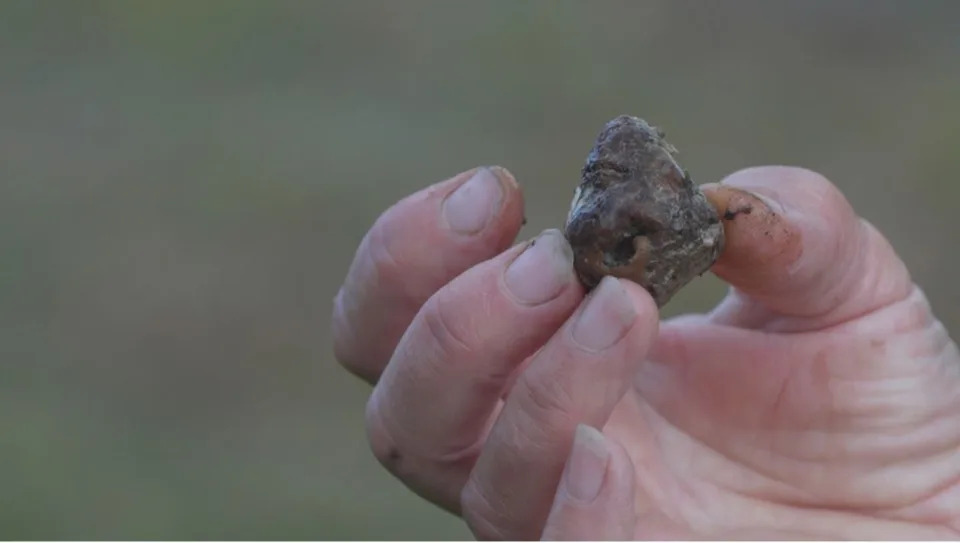
Groulx keeps samples of the native truffle to inoculate her trees. (Chantal Dubuc/Radio-Canada)
Burgundy truffles were ideal, Groulx said, as they were well adapted to Ontario's climate and would help protect her oak and hazel trees against disease.
But as she was digging to harvest the fungi, she was surprised to come across a delicious intruder.
"I planted Burgundy truffles, then I found another truffle," she said in French. "You know, you plant red potatoes, you find white potatoes."
Truffle has unique genetic makeup
Groulx, a former pharmacy technician, rushed to have the truffle analyzed to ensure it was edible.
A laboratory at the University of Florida confirmed last January the truffle was not only safe to eat, but also had a unique genetic makeup.
The truffle's DNA sequence had never been identified before, and its natural chemical compounds give it a unique character — and a smell and taste of its own.
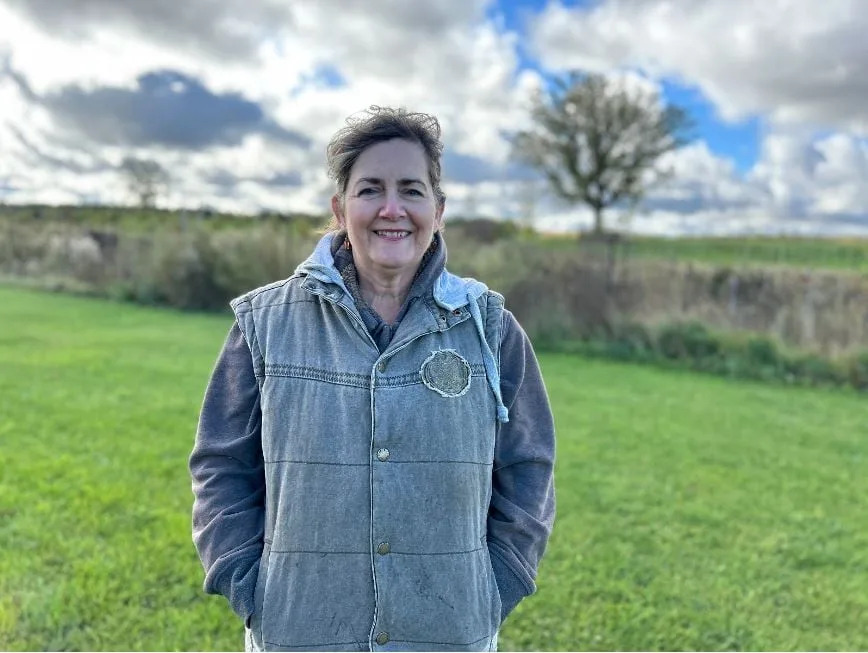
Groulx fell in love with the lifestyle associated with truffle harvesting. (Stéphanie Rhéaume/Radio-Canada)
According to Groulx, the fungus is distinguished by smoky notes, reminiscent of bacon.
Its interior is made up of hazelnut-coloured marbling, while its exterior envelope is pale brown in colour, Groulx said.
Maude Lemire-Comeau, president and CEO of Truffles Québec, said the discovery of a truffle native to the area is exciting.
The organization produces truffle trees for all of North America, and Lemire-Comeau sees commercial potential.
Truffle trees are trees that support the growth of truffles, like oak.
Dog helps find the truffles
Lemire-Comeau said truffle spores must already have been present in the Ontario subsoil when she planted the French imports.
"The biggest competitors for truffles when you set up a truffle farm are other types of truffles," Lemire-Comeau said, adding her native truffles are now supplanting the ones from Burgundy.
She's finding many more with the help of her dog, Minoune, whose ability to track down the truffles is "exceptional," according to Groulx.
It takes a lot of patience to spot the powerfully-scented fungi, and Groulx's four-legged companion prefers to hunt mice or eat grass, rather than looking for precious truffles.
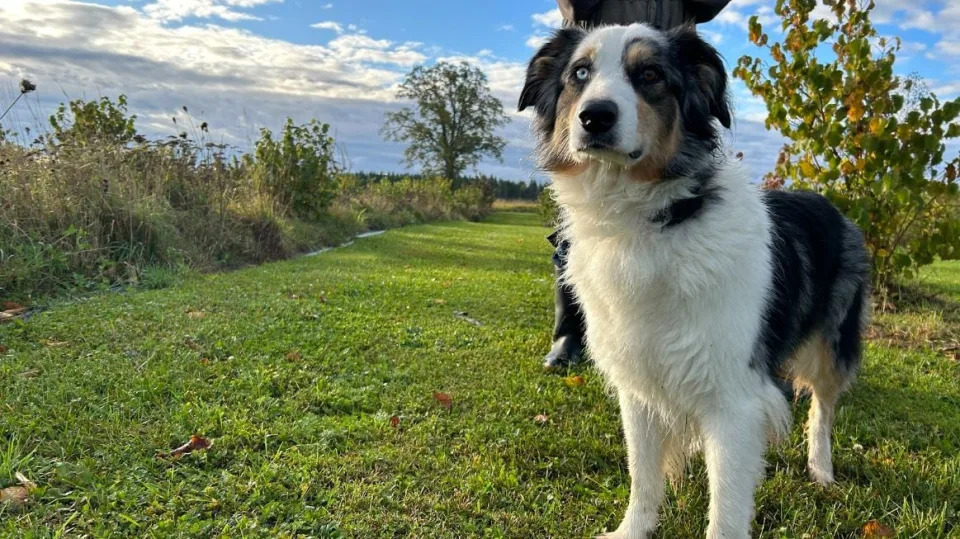
Minoune, 7, is an Australian shepherd and truffle hunter. (Stéphanie Rhéaume/Radio-Canada)
"When she starts scratching, you know it's there," she said in French. "As soon as I find it, I put it under her nose so that she can smell what she has found."
Groulx rewards Minoune for each underground treasure she finds.
A native of Alfred and Plantagenet, Ont., Groulx studied dairy production at the Alfred College of Agricultural and Food Technology in the 1980s. She then dreamed of taking over the family land.
Now, she's harvesting the native truffle and incorporating it into cream cheese she makes — further evidence she's "caught the truffle bug."
CBC
Sun, October 22, 2023

When Lucille Groulx started her truffle farm in Wendover, Ont., in 2015, she was using truffles she had imported from France.
Only later did she discover an indigenous variety of the rare delicacy was already buried on her land.
The native truffle found on the Domaine du Roi farm is the species Tuber rufum, a type of truffle that exists almost everywhere in the world but includes local indigenous varieties.
Originally, Groulx had opted for Burgundy truffles and made the trip to France to bring some back.

Groulx keeps samples of the native truffle to inoculate her trees. (Chantal Dubuc/Radio-Canada)
Burgundy truffles were ideal, Groulx said, as they were well adapted to Ontario's climate and would help protect her oak and hazel trees against disease.
But as she was digging to harvest the fungi, she was surprised to come across a delicious intruder.
"I planted Burgundy truffles, then I found another truffle," she said in French. "You know, you plant red potatoes, you find white potatoes."
Truffle has unique genetic makeup
Groulx, a former pharmacy technician, rushed to have the truffle analyzed to ensure it was edible.
A laboratory at the University of Florida confirmed last January the truffle was not only safe to eat, but also had a unique genetic makeup.
The truffle's DNA sequence had never been identified before, and its natural chemical compounds give it a unique character — and a smell and taste of its own.

Groulx fell in love with the lifestyle associated with truffle harvesting. (Stéphanie Rhéaume/Radio-Canada)
According to Groulx, the fungus is distinguished by smoky notes, reminiscent of bacon.
Its interior is made up of hazelnut-coloured marbling, while its exterior envelope is pale brown in colour, Groulx said.
Maude Lemire-Comeau, president and CEO of Truffles Québec, said the discovery of a truffle native to the area is exciting.
The organization produces truffle trees for all of North America, and Lemire-Comeau sees commercial potential.
Truffle trees are trees that support the growth of truffles, like oak.
Dog helps find the truffles
Lemire-Comeau said truffle spores must already have been present in the Ontario subsoil when she planted the French imports.
"The biggest competitors for truffles when you set up a truffle farm are other types of truffles," Lemire-Comeau said, adding her native truffles are now supplanting the ones from Burgundy.
She's finding many more with the help of her dog, Minoune, whose ability to track down the truffles is "exceptional," according to Groulx.
It takes a lot of patience to spot the powerfully-scented fungi, and Groulx's four-legged companion prefers to hunt mice or eat grass, rather than looking for precious truffles.

Minoune, 7, is an Australian shepherd and truffle hunter. (Stéphanie Rhéaume/Radio-Canada)
"When she starts scratching, you know it's there," she said in French. "As soon as I find it, I put it under her nose so that she can smell what she has found."
Groulx rewards Minoune for each underground treasure she finds.
A native of Alfred and Plantagenet, Ont., Groulx studied dairy production at the Alfred College of Agricultural and Food Technology in the 1980s. She then dreamed of taking over the family land.
Now, she's harvesting the native truffle and incorporating it into cream cheese she makes — further evidence she's "caught the truffle bug."
No comments:
Post a Comment